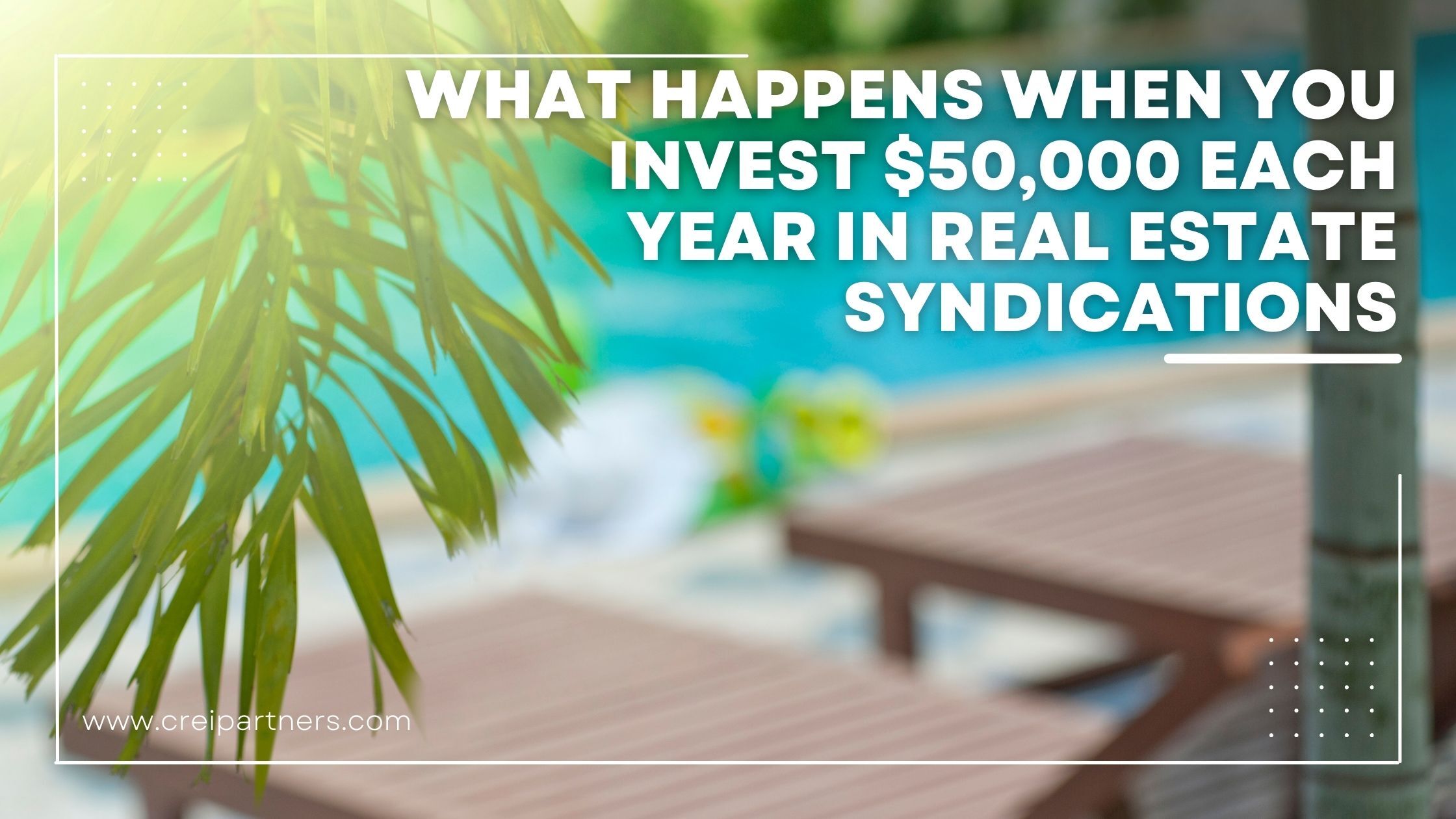
What Happens When You Invest $50,000 Each Year In Real Estate Syndications
Fifty thousand dollars is a LOT of money. Never mind fifty thousand dollars per year. I get it, but hear me out. Once you see the potential results, I strongly believe you might be more willing to put forth the effort required to invest in real estate syndications, annually.
I’ve seen regular people with regular salaries (even teachers!) do this and change their trajectories forever. So, as with most things in life, it’s about resourcefulness, not resources. You can do anything you put your mind to, and seeing the progression of investing in syndications year after year might help you put your mind to it.
Here’s what could happen when you invest $50,000 a year into real estate syndications:

 Subscribe to our newsletter so you never miss out on new investment opportunities, podcasts, blogs, news and events.
Subscribe to our newsletter so you never miss out on new investment opportunities, podcasts, blogs, news and events.